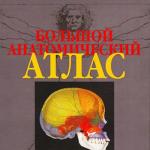The proposed manual is addressed to students in grades 10-11 who plan to take the Unified State Exam in physics, teachers and methodologists. The book is intended for the initial stage of active preparation for the exam, for practicing all topics and types of tasks of basic and advanced levels of complexity. The material presented in the book complies with the Unified State Exam-2016 specification in physics and the Federal State Educational Standard for secondary general education.
The publication contains the following materials:
- theoretical material on the topics “Mechanics”, “Molecular Physics”, “Electrodynamics”, “Oscillations and Waves”, “Optics”, “Quantum Physics”;
- tasks of basic and advanced levels of complexity for the above sections, distributed by topic and level;
- answers to all tasks.
The book will be useful for reviewing the material, for practicing the skills and competencies necessary to pass the Unified State Exam, for organizing preparation for the exam in the classroom and at home, as well as for use in the educational process not only for the purpose of exam preparation. The manual is also suitable for applicants planning to take the Unified State Exam after a break in their studies.
The publication is included in the educational and methodological complex “Physics. Preparation for the Unified State Exam."
Examples.
Two cars left points A and B towards each other. The speed of the first car is 80 km/h, the second is 10 km/h less than the first. What is the distance between points A and B if the cars meet in 2 hours?
Bodies 1 and 2 move along the x axis at constant speed. Figure 11 shows graphs of the dependence of the coordinates of moving bodies 1 and 2 on time t. Determine at what time t the first body will catch up with the second.
Two cars are driving along a straight section of highway in the same direction. The speed of the first car is 90 km/h, the second is 60 km/h. What is the speed of the first car relative to the second?
Table of contents
From authors 7
Chapter I. Mechanics 11
Theoretical material 11
Kinematics 11
Dynamics of a material point 14
Conservation laws in mechanics 16
Statics 18
Basic difficulty level 19 tasks
§ 1. Kinematics 19
1.1. Speed of uniform linear motion 19
1.2. Equation of uniform rectilinear motion 21
1.3. Speed addition 24
1.4. Motion with constant acceleration 26
1.5. Free Fall 34
1.6. Circular movement 38
§ 2. Dynamics 39
2.1. Newton's Laws 39
2.2. Force of universal gravitationlaw of universal gravitation 42
2.3. Gravity, body weight 44
2.4. Elastic force, Hooke's law 46
2.5. Friction force 47
§ 3. Conservation laws in mechanics 49
3.1. Pulse. Law of conservation of momentum 49
3.2. Work of force.^Power 54
3.3. Kinetic energy and its change 55
§ 4. Statics 56
4.1. Balance of bodies 56
4.2. Archimedes' law. Swimming condition of bodies 58
Advanced tasks 61
§ 5. Kinematics 61
§ 6. Dynamics of a material point 67
§ 7. Conservation laws in mechanics 76
§ 8. Statics 85
Chapter II. Molecular Physics 89
Theoretical material 89
Molecular Physics 89
Thermodynamics 92
Basic difficulty level 95 tasks
§ 1. Molecular physics 95
1.1. Models of the structure of gases, liquids and solids. Thermal movement of atoms and molecules. Interaction of particles of matter. Diffusion, Brownian motion, ideal gas model. Changes in the aggregate states of matter (explanation of phenomena) 95
1.2. Amount of substance 102
1.3. Basic equation MKT 103
1.4. Temperature is a measure of the average kinetic energy of molecules 105
1.5. Equation of state of an ideal gas 107
1.6. Gas laws 112
1.7. Saturated steam. Humidity 125
1.8. Internal energy, amount of heat, work in thermodynamics 128
1.9. First law of thermodynamics 143
1.10. Efficiency of heat engines 147
Advanced level tasks 150
§ 2. Molecular physics 150
§ 3. Thermodynamics 159
Chapter III. Electrodynamics 176
Theoretical material 176
Basic concepts and laws of electrostatics 176
Electrical capacity. Capacitors. Electric field energy 178
Basic concepts and laws of direct current 179
Basic concepts and laws of magnetostatics 180
Basic concepts and laws of electromagnetic induction 182
Basic difficulty level tasks 183
§ 1. Fundamentals of electrodynamics 183
1.1. Electrification of bodies. Law of conservation of electric charge (explanation of phenomena) 183
1.2. Coulomb's Law 186
1.3. Electric field strength 187
1.4. Electrostatic field potential 191
1.5. Electrical capacity, capacitors 192
1.6. Ohm's law for circuit section 193
1.7. Series and parallel connection of conductors 196
1.8. DC operation and power 199
1.9. Ohm's Law for a Complete Circuit 202
§ 2. Magnetic field 204
2.1. Interaction of currents 204
2.2. Ampere power. Lorentz force 206
§ 3. Electromagnetic induction 212
3.1. Induction current. Lenz's Rule 212
3.2. Law of electromagnetic induction 216
3.3. Self-induction. Inductance 219
3.4. Magnetic field energy 221
Tasks of increased difficulty level 222
§ 4. Fundamentals of electrodynamics 222
§ 5. Magnetic field 239
§ 6. Electromagnetic induction 243
Chapter IV. Oscillations and waves 247
Theoretical material 247
Mechanical vibrations and waves 247
Electromagnetic oscillations and waves 248
Basic difficulty level 250 tasks
§ 1. Mechanical vibrations 250
1.1. Math pendulum 250
1.2. Dynamics of oscillatory motion 253
1.3. Energy conversion during harmonic vibrations 257
1.4. Forced vibrations. Resonance 258
§ 2. Electromagnetic oscillations 260
2.1. Processes in an oscillatory circuit 260
2.2. Period of free oscillations 262
2.3. Alternating electric current 266
§ 3. Mechanical waves 267
§ 4. Electromagnetic waves 270
Advanced tasks 272
§ 5. Mechanical vibrations 272
§ 6. Electromagnetic oscillations 282
Chapter V. Optics 293
Theoretical material 293
Basic concepts and laws of geometric optics 293
Basic concepts and laws of wave optics 295
Fundamentals of the special theory of relativity (STR) 296
Basic difficulty level tasks 296
§ 1. Light waves 296
1.1. Law of Light Reflection 296
1.2. Law of light refraction 298
1.3. Constructing an image in lenses 301
1.4. Thin lens formula. Lens magnification 304
1.5. Dispersion, interference and diffraction of light 306
§ 2. Elements of the theory of relativity 309
2.1. Postulates of the theory of relativity 309
2.2. Main consequences of postulates 311
§ 3. Radiations and spectra 312
Tasks of increased difficulty level 314
§ 4. Optics 314
Chapter VI. Quantum Physics 326
Theoretical material 326
Basic concepts and laws of quantum physics 326
Basic concepts and laws of nuclear physics 327
Basic difficulty level tasks 328
§ 1. Quantum physics 328
1.1. Photo effect 328
1.2. Photons 333
§ 2. Atomic physics 335
2.1. The structure of the atom. Rutherford's experiments 335
2.2. Bohr model of the hydrogen atom 336
§ 3. Physics of the atomic nucleus 339
3.1. Alpha, beta and gamma radiation 339
3.2. Radioactive transformations 340
3.3. Law of Radioactive Decay 341
3.4. Structure of the atomic nucleus 346
3.5. Binding energy of atomic nuclei 347
3.6. Nuclear reactions 348
3.7. Fission of uranium 350 nuclei
3.8. Nuclear chain reactions 351
§ 4. Elementary particles 351
Tasks of increased difficulty level 352
§ 5. Quantum physics 352
§ 6. Atomic physics 356
Answers to the collection of tasks 359.

M.: 2010.- 752 p. M.: 1981.- T.1 - 336 p., T.2 - 288 p.
The book by the famous US physicist J. Orear is one of the most successful introductory courses in physics in world literature, covering the range from physics as a school subject to an accessible description of its latest achievements. This book has taken pride of place on the bookshelf of several generations of Russian physicists, and for this edition the book has been significantly expanded and modernized. The author of the book, a student of the outstanding physicist of the 20th century, Nobel laureate E. Fermi, taught his course to students at Cornell University for many years. This course can serve as a useful practical introduction to the widely known Feynman Lectures on Physics and the Berkeley Course in Physics in Russia. In terms of its level and content, Orir’s book is already accessible to high school students, but may also be of interest to undergraduates, graduate students, teachers, as well as all those who want not only to systematize and expand their knowledge in the field of physics, but also to learn how to successfully solve a wide range of problems physical tasks.
Format: pdf(2010, 752 pp.)
Size: 56 MB
Watch, download: drive.google
Note: Below is a color scan.
Volume 1.
Format: djvu (1981, 336 pp.)
Size: 5.6 MB
Watch, download: drive.google
Volume 2.
Format: djvu (1981, 288 pp.)
Size: 5.3 MB
Watch, download: drive.google
TABLE OF CONTENTS
Preface by the editor of the Russian edition 13
Preface 15
1. INTRODUCTION 19
§ 1. What is physics? 19
§ 2. Units of measurement 21
§ 3. Analysis of dimensions 24
§ 4. Accuracy in physics 26
§ 5. The role of mathematics in physics 28
§ 6. Science and society 30
Application. Correct answers that do not contain some common errors 31
Exercises 31
Problems 32
2. ONE-DIMENSIONAL MOTION 34
§ 1. Speed 34
§ 2. Average speed 36
§ 3. Acceleration 37
§ 4. Uniformly accelerated motion 39
Key findings 43
Exercises 43
Problems 44
3. TWO-DIMENSIONAL MOTION 46
§ 1. Trajectories of free fall 46
§ 2. Vectors 47
§ 3. Projectile motion 52
§ 4. Uniform motion in a circle 24
§ 5. Artificial satellites of the Earth 55
Key findings 58
Exercises 58
Problems 59
4. DYNAMICS 61
§ 1. Introduction 61
§ 2. Definitions of basic concepts 62
§ 3. Newton's laws 63
§ 4. Units of force and mass 66
§ 5. Contact forces (reaction and friction forces) 67
§ 6. Solving problems 70
§ 7. Atwood machine 73
§ 8. Conical pendulum 74
§ 9. Law of conservation of momentum 75
Key findings 77
Exercises 78
Problems 79
5. GRAVITY 82
§ 1. Law of universal gravitation 82
§ 2. Cavendish experiment 85
§ 3. Kepler's laws for planetary motions 86
§ 4. Weight 88
§ 5. The principle of equivalence 91
§ 6. Gravitational field inside a sphere 92
Key findings 93
Exercises 94
Problems 95
6. WORK AND ENERGY 98
§ 1. Introduction 98
§ 2. Work 98
§ 3. Power 100
§ 4. Dot product 101
§ 5. Kinetic energy 103
§ 6. Potential energy 105
§ 7. Gravitational potential energy 107
§ 8. Potential energy of a spring 108
Key findings 109
Exercises 109
Problems 111
7. LAW OF CONSERVATION OF ENERGY FROM
§ 1. Conservation of mechanical energy 114
§ 2. Collisions 117
§ 3. Conservation of gravitational energy 120
§ 4. Potential energy diagrams 122
§ 5. Conservation of total energy 123
§ 6. Energy in biology 126
§ 7. Energy and the car 128
Key findings 131
Application. Law of conservation of energy for a system of N particles 131
Exercises 132
Problems 132
8. RELATIVISTIC KINEMATICS 136
§ 1. Introduction 136
§ 2. Constancy of the speed of light 137
§ 3. Time dilation 142
§ 4. Lorentz transformations 145
§ 5. Simultaneity 148
§ 6. Optical Doppler effect 149
§ 7. The twin paradox 151
Key findings 154
Exercises 154
Problems 155
9. RELATIVISTIC DYNAMICS 159
§ 1. Relativistic addition of velocities 159
§ 2. Definition of relativistic momentum 161
§ 3. Law of conservation of momentum and energy 162
§ 4. Equivalence of mass and energy 164
§ 5. Kinetic energy 166
§ 6. Mass and force 167
§ 7. General theory of relativity 168
Key findings 170
Application. Conversion of energy and momentum 170
Exercises 171
Problems 172
10. ROTATIONAL MOTION 175
§ 1. Kinematics of rotational motion 175
§ 2. Vector product 176
§ 3. Angular momentum 177
§ 4. Dynamics of rotational motion 179
§ 5. Center of mass 182
§ 6. Solids and moment of inertia 184
§ 7. Statics 187
§ 8. Flywheels 189
Key findings 191
Exercises 191
Problems 192
11. VIBRATIONAL MOTION 196
§ 1. Harmonic force 196
§ 2. Period of oscillation 198
§ 3. Pendulum 200
§ 4. Energy of simple harmonic motion 202
§ 5. Small oscillations 203
§ 6. Sound intensity 206
Key findings 206
Exercises 208
Problems 209
12. KINETIC THEORY 213
§ 1. Pressure and hydrostatics 213
§ 2. Equation of state of an ideal gas 217
§ 3. Temperature 219
§ 4. Uniform distribution of energy 222
§ 5. Kinetic theory of heat 224
Key findings 226
Exercises 226
Problems 228
13. THERMODYNAMICS 230
§ 1. The first law of thermodynamics 230
§ 2. Avogadro's conjecture 231
§ 3. Specific heat capacity 232
§ 4. Isothermal expansion 235
§ 5. Adiabatic expansion 236
§ 6. Gasoline engine 238
Key findings 240
Exercises 241
Problems 241
14. SECOND LAW OF THERMODYNAMICS 244
§ 1. Carnot machine 244
§ 2. Thermal pollution of the environment 246
§ 3. Refrigerators and heat pumps 247
§ 4. Second law of thermodynamics 249
§ 5. Entropy 252
§ 6. Time reversal 256
Key findings 259
Exercises 259
Problems 260
15. ELECTROSTATIC FORCE 262
§ 1. Electric charge 262
§ 2. Coulomb's Law 263
§ 3. Electric field 266
§ 4. Electric power lines 268
§ 5. Gauss's theorem 270
Key findings 275
Exercises 275
Problems 276
16. ELECTROSTATICS 279
§ 1. Spherical charge distribution 279
§ 2. Linear charge distribution 282
§ 3. Plane charge distribution 283
§ 4. Electric potential 286
§ 5. Electric capacity 291
§ 6. Dielectrics 294
Key findings 296
Exercises 297
Problems 299
17. ELECTRIC CURRENT AND MAGNETIC FORCE 302
§ 1. Electric current 302
§ 2. Ohm's law 303
§ 3. DC circuits 306
§ 4. Empirical data on magnetic force 310
§ 5. Derivation of the formula for magnetic force 312
§ 6. Magnetic field 313
§ 7. Magnetic field measurement units 316
§ 8. Relativistic transformation of quantities *8 and E 318
Key findings 320
Application. Relativistic transformations of current and charge 321
Exercises 322
Problems 323
18. MAGNETIC FIELDS 327
§ 1. Ampere's law 327
§ 2. Some current configurations 329
§ 3. Biot-Savart Law 333
§ 4. Magnetism 336
§ 5. Maxwell's equations for direct currents 339
Key findings 339
Exercises 340
Problems 341
19. ELECTROMAGNETIC INDUCTION 344
§ 1. Engines and generators 344
§ 2. Faraday's Law 346
§ 3. Lenz's Law 348
§ 4. Inductance 350
§ 5. Magnetic field energy 352
§ 6. AC circuits 355
§ 7. Circuits RC and RL 359
Key findings 362
Application. Freeform contour 363
Exercises 364
Problems 366
20. ELECTROMAGNETIC RADIATION AND WAVES 369
§ 1. Displacement current 369
§ 2. Maxwell's equations in general form 371
§ 3. Electromagnetic radiation 373
§ 4. Radiation of a plane sinusoidal current 374
§ 5. Non-sinusoidal current; Fourier expansion 377
§ 6. Traveling waves 379
§ 7. Energy transfer by waves 383
Key findings 384
Application. Derivation of the wave equation 385
Exercises 387
Problems 387
21. INTERACTION OF RADIATION WITH MATTER 390
§ 1. Radiation energy 390
§ 2. Radiation pulse 393
§ 3. Reflection of radiation from a good conductor 394
§ 4. Interaction of radiation with a dielectric 395
§ 5. Refractive index 396
§ 6. Electromagnetic radiation in an ionized medium 400
§ 7. Radiation field of point charges 401
Key Findings 404
Appendix 1. Phase diagram method 405
Appendix 2. Wave packets and group velocity 406
Exercises 410
Problems 410
22. WAVE INTERFERENCE 414
§ 1. Standing waves 414
§ 2. Interference of waves emitted by two point sources 417
§3. Interference of waves from a large number of sources 419
§ 4. Diffraction grating 421
§ 5. Huygens' principle 423
§ 6. Diffraction by a single slit 425
§ 7. Coherence and non-coherence 427
Key findings 430
Exercises 431
Problems 432
23. OPTICS 434
§ 1. Holography 434
§ 2. Polarization of light 438
§ 3. Diffraction by a round hole 443
§ 4. Optical instruments and their resolution 444
§ 5. Diffraction scattering 448
§ 6. Geometric optics 451
Key findings 455
Application. Brewster's Law 455
Exercises 456
Problems 457
24. WAVE NATURE OF MATTER 460
§ 1. Classical and modern physics 460
§ 2. Photoelectric effect 461
§ 3. Compton effect 465
§ 4. Wave-particle duality 465
§ 5. The Great Paradox 466
§ 6. Electron diffraction 470
Key findings 472
Exercises 473
Problems 473
25. QUANTUM MECHANICS 475
§ 1. Wave packets 475
§ 2. The uncertainty principle 477
§ 3. Particle in a box 481
§ 4. Schrödinger equation 485
§ 5. Potential wells of finite depth 486
§ 6. Harmonic oscillator 489
Key findings 491
Exercises 491
Problems 492
26. HYDROGEN ATOM 495
§ 1. Approximate theory of the hydrogen atom 495
§ 2. Schrödinger’s equation in three dimensions 496
§ 3. Rigorous theory of the hydrogen atom 498
§ 4. Orbital angular momentum 500
§ 5. Emission of photons 504
§ 6. Stimulated emission 508
§ 7. Bohr model of the atom 509
Key findings 512
Exercises 513
Problems 514
27. ATOMIC PHYSICS 516
§ 1. Pauli's exclusion principle 516
§ 2. Multielectron atoms 517
§ 3. Periodic table of elements 521
§ 4. X-ray radiation 525
§ 5. Bonding in molecules 526
§ 6. Hybridization 528
Key findings 531
Exercises 531
Problems 532
28. CONDENSED MATTER 533
§ 1. Types of communication 533
§ 2. Theory of free electrons in metals 536
§ 3. Electrical conductivity 540
§ 4. Band theory of solids 544
§ 5. Physics of semiconductors 550
§ 6. Superfluidity 557
§ 7. Penetration through the barrier 558
Key findings 560
Application. Various applications/?-n-junction (in radio and television) 562
Exercises 564
Problems 566
29. NUCLEAR PHYSICS 568
§ 1. Dimensions of nuclei 568
§ 2. Fundamental forces acting between two nucleons 573
§ 3. Structure of heavy nuclei 576
§ 4. Alpha decay 583
§ 5. Gamma and beta decays 586
§ 6. Nuclear fission 588
§ 7. Synthesis of nuclei 592
Key findings 596
Exercises 597
Problems 597
30. ASTROPHYSICS 600
§ 1. Energy sources of stars 600
§ 2. Evolution of stars 603
§ 3. Quantum mechanical pressure of a degenerate Fermi gas 605
§ 4. White dwarfs 607
§ 6. Black holes 609
§ 7. Neutron stars 611
31. PHYSICS OF ELEMENTARY PARTICLES 615
§ 1. Introduction 615
§ 2. Fundamental particles 620
§ 3. Fundamental interactions 622
§ 4. Interactions between fundamental particles as an exchange of quanta of the carrier field 623
§ 5. Symmetries in the world of particles and conservation laws 636
§ 6. Quantum electrodynamics as a local gauge theory 629
§ 7. Internal symmetries of hadrons 650
§ 8. Quark model of hadrons 636
§ 9. Color. Quantum Chromodynamics 641
§ 10. Are quarks and gluons “visible”? 650
§ 11. Weak interactions 653
§ 12. Non-conservation of parity 656
§ 13. Intermediate bosons and non-renormalizability of the theory 660
§ 14. Standard model 662
§ 15. New ideas: GUT, supersymmetry, superstrings 674
32. GRAVITY AND COSMOLOGY 678
§ 1. Introduction 678
§ 2. The principle of equivalence 679
§ 3. Metric theories of gravitation 680
§ 4. Structure of the general relativity equations. The simplest solutions 684
§ 5. Verification of the equivalence principle 685
§ 6. How to estimate the scale of effects of general relativity? 687
§ 7. Classical tests of general relativity 688
§ 8. Basic principles of modern cosmology 694
§ 9. Model of the hot Universe (“standard” cosmological model) 703
§ 10. Age of the Universe 705
§eleven. Critical density and Friedman evolution scenarios 705
§ 12. Density of matter in the Universe and hidden mass 708
§ 13. Scenario for the first three minutes of the evolution of the Universe 710
§ 14. Near the very beginning 718
§ 15. Inflation scenario 722
§ 16. The mystery of dark matter 726
APPENDIX A 730
Physical constants 730
Some astronomical information 730
APPENDIX B 731
Units of measurement of basic physical quantities 731
Units of measurement of electrical quantities 731
APPENDIX B 732
Geometry 732
Trigonometry 732
Quadratic Equation 732
Some derivatives 733
Some indefinite integrals (up to an arbitrary constant) 733
Products of vectors 733
Greek alphabet 733
ANSWERS TO EXERCISES AND PROBLEMS 734
INDEX 746
At present, there is practically no area of natural science or technical knowledge where the achievements of physics are not used to one degree or another. Moreover, these achievements are increasingly penetrating the traditional humanities, which is reflected in the inclusion of the discipline “Concepts of modern natural science” in the curricula of all humanities specialties at Russian universities.
The book brought to the attention of the Russian reader by J. Orear was first published in Russia (more precisely, in the USSR) more than a quarter of a century ago, but, as happens with really good books, it has not yet lost interest and relevance. The secret of the vitality of Orir's book is that it successfully fills a niche that is invariably in demand by new generations of readers, mainly young ones.
Without being a textbook in the usual sense of the word - and without claims to replace it - Orir's book offers a fairly complete and consistent presentation of the entire course of physics at a very elementary level. This level is not burdened with complex mathematics and, in principle, is accessible to every inquisitive and hardworking schoolchild, and especially to students.
An easy and free style of presentation that does not sacrifice logic and does not avoid difficult questions, a thoughtful selection of illustrations, diagrams and graphs, the use of a large number of examples and tasks that, as a rule, have practical significance and correspond to the life experience of students - all this makes Orir’s book an indispensable guide for self-education or additional reading.
Of course, it can be successfully used as a useful addition to ordinary textbooks and manuals on physics, primarily in physics and mathematics classes, lyceums and colleges. Orir's book can also be recommended to junior students of higher educational institutions where physics is not a major discipline.
Depending on your goal, free time and level of mathematical preparation, several options are possible.
Option 1
The goal is “for yourself”, the deadlines are not limited, mathematics is also almost from scratch.
Choose a line of textbooks that is more interesting, for example, and study it, taking notes in a notebook. Then go through the textbooks of G. Ya. Myakishev and B. B. Bukhovtsev for grades 10-11 in the same way. Consolidate your knowledge - read.
If G. S. Landsberg's manuals do not suit you, and they are specifically for those who study physics from scratch, take the line of textbooks for grades 7-9 by A. V. Peryshkin and E. M. Gutnik. There is no need to be embarrassed that this is for young children - sometimes even fifth-year students without preparation “swim” in Peryshkin for 7th grade already from the tenth page.
How to practice
Be sure to answer the questions and complete the tasks after the paragraphs.
At the end of the notebook, make yourself a reference book on basic concepts and formulas.
Be sure to find videos on YouTube with physical experiments that appear in the textbook. Look through and take notes according to the scheme: what did you see - what did you observe - why? I recommend the resource - all experiments and theory for them are systematized there.
Immediately start a separate notebook for solving problems. Start with and solve half of the tasks from it. Then solve by 70% or, as an option - “for 10-11 grades G.N. and A.P. Stepanov.
Try to decide for yourself, look in the solution book as a last resort. If you encounter a difficulty, look for an analogue of the problem with analysis. To do this, you need to have 3-4 paper books on hand, where solutions to physical problems are discussed in detail. For example, N. E. Savchenko or books by I. L. Kasatkina.
If everything is clear to you, and your soul asks for complex things, take it for specialized classes and solve all the exercises.
We invite everyone who wants to study physics
Option 2
The goal is a Unified State Examination or another, the period is two years, mathematics is from scratch.
Handbook for schoolchildren by O. F. Kabardin and “Collection of problems in physics” for grades 10-11 by O. I. Gromtseva O. I. (“tailored” for the Unified State Exam). If the exam is not the Unified State Exam, it is better to take the problem books of V. I. Lukashik and A. P. Rymkevich or “Collection of questions and problems in physics” for grades 10-11 by G. N. Stepanova, A. P. Stepanova. Do not hesitate to refer to the textbooks of A.V. Peryshkin and E.M. Gutnik for grades 7-9, or better yet, take notes on them too.
Persistent and hardworking people can go through the entire book by V. A. Orlov, G. G. Nikiforov, A. A. Fadeeva and others. This manual has everything you need: theory, practice, tasks.
How to practice
The system is the same as in the first option:
- keep notebooks for taking notes and solving problems,
- take notes and solve problems in your notebook yourself,
- view and analyze experiments, for example, on.
- If you want to most effectively prepare for the Unified State Exam or Unified State Exam in the remaining time,
Option 3
The goal is the Unified State Exam, the deadline is 1 year, mathematics is at a good level.
If mathematics is normal, you don’t have to turn to textbooks for grades 7-9, but immediately take grades 10-11 and O. F. Kabardin’s reference book for schoolchildren. The Kabardin manual contains topics that are not in textbooks for grades 10-11. At the same time, I recommend watching videos with experiments in physics and analyzing them according to the scheme.
Option 4
The goal is the Unified State Exam, the deadline is 1 year, mathematics is at zero.
It is unrealistic to prepare for the Unified State Exam in a year without a foundation in mathematics. Unless you do all the points from option No. 2 every day for 2 hours.
Teachers and tutors at the Foxford online school will help you achieve maximum results in the remaining time.
The video course “Get an A” includes all the topics necessary to successfully pass the Unified State Exam in mathematics with 60-65 points. Completely all tasks 1-13 of the Profile Unified State Exam in mathematics. Also suitable for passing the Basic Unified State Examination in mathematics. If you want to pass the Unified State Exam with 90-100 points, you need to solve part 1 in 30 minutes and without mistakes!
Preparation course for the Unified State Exam for grades 10-11, as well as for teachers. Everything you need to solve Part 1 of the Unified State Exam in mathematics (the first 12 problems) and Problem 13 (trigonometry). And this is more than 70 points on the Unified State Exam, and neither a 100-point student nor a humanities student can do without them.
All the necessary theory. Quick solutions, pitfalls and secrets of the Unified State Exam. All current tasks of part 1 from the FIPI Task Bank have been analyzed. The course fully complies with the requirements of the Unified State Exam 2018.
The course contains 5 large topics, 2.5 hours each. Each topic is given from scratch, simply and clearly.
Hundreds of Unified State Exam tasks. Word problems and probability theory. Simple and easy to remember algorithms for solving problems. Geometry. Theory, reference material, analysis of all types of Unified State Examination tasks. Stereometry. Tricky solutions, useful cheat sheets, development of spatial imagination. Trigonometry from scratch to problem 13. Understanding instead of cramming. Clear explanations of complex concepts. Algebra. Roots, powers and logarithms, function and derivative. A basis for solving complex problems of Part 2 of the Unified State Exam.
Physics is a rather complex subject, so preparing for the Unified State Exam in Physics 2019 will take a sufficient amount of time. In addition to theoretical knowledge, the commission will test the ability to read diagrams and solve problems.
Let's look at the structure of the exam paper
It consists of 32 tasks distributed over two blocks. For understanding, it is more convenient to arrange all the information in a table.
The entire theory of the Unified State Examination in Physics by sections
- Mechanics. This is a very large, but relatively simple section that studies the movement of bodies and the interactions that occur between them, including dynamics and kinematics, conservation laws in mechanics, statics, vibrations and waves of a mechanical nature.
- Molecular physics. This topic places particular emphasis on thermodynamics and molecular kinetic theory.
- Quantum physics and components of astrophysics. These are the most difficult sections that cause difficulties both during study and during testing. But also, perhaps, one of the most interesting sections. Here, knowledge is tested on such topics as the physics of the atom and the atomic nucleus, wave-particle duality, and astrophysics.
- Electrodynamics and special theory of relativity. Here you can’t do without studying optics, the fundamentals of SRT; you need to know how the electric and magnetic fields operate, what direct current is, what are the principles of electromagnetic induction, how electromagnetic oscillations and waves arise.
Yes, there is a lot of information, the volume is very decent. In order to successfully pass the Unified State Exam in physics, you need to have a very good command of the entire school course in the subject, and it is studied for five whole years. Therefore, it will not be possible to prepare for this exam in a few weeks or even a month. You need to start now so that you can feel calm during the tests.
Unfortunately, the subject of physics causes difficulties for many graduates, especially for those who chose it as their major for admission to university. Effective learning of this discipline has nothing to do with memorizing rules, formulas and algorithms. In addition, mastering physics ideas and reading as much theory as possible is not enough; you need to be proficient in mathematical techniques. Often, poor mathematical preparation prevents a student from doing well in physics.
How to prepare?
Everything is very simple: choose a theoretical section, read it carefully, study it, trying to understand all physical concepts, principles, postulates. After this, reinforce your preparation by solving practical problems on the chosen topic. Use online tests to test your knowledge; this will allow you to immediately understand where you are making mistakes and get used to the fact that a certain amount of time is given to solve a problem. We wish you good luck!




















